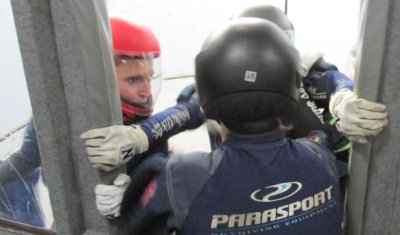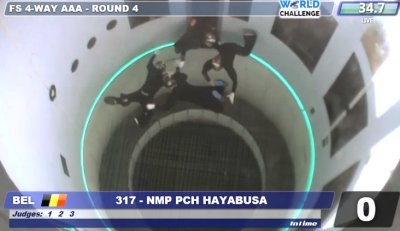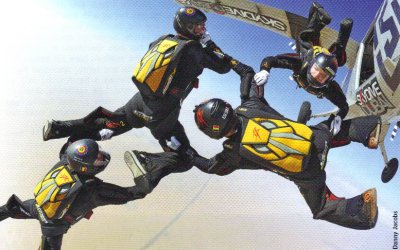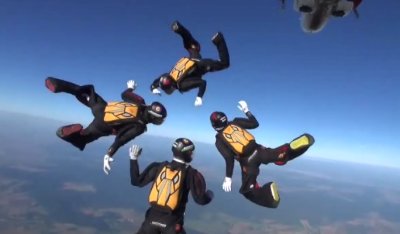
National
Skydiving
League
226 Pecan Street
Deland FL 32724
tel: (386) 801-0804
© 2003 - 2025
All Rights Reserved


226 Pecan Street
Deland FL 32724
tel: (386) 801-0804
© 2003 - 2025
All Rights Reserved


There is one downer though that I have seen often, especially when teams and competitors transition back from intensive indoor training to their home DZs and try to apply what has been worked on and learned in the wind tunnel. In fact, I have mentioned this before when I researched the difference of the scoring level at indoor and outdoor meets.
Of course, it was no surprise that the indoor scoring level turned out to be significantly higher than the outdoor averages. Teams and competitors should be prepared to face a 4- to 5-point difference of the meet average when they compete at outdoor meets, depending on the performance level. I was looking at the psychology of this potentially sobering experience when I wrote about it.

It is not only the missing skydiving gear that makes it much easier to move - significantly quicker - in the flying chamber. There is also a lower stress level, as you don't have to deal with the ride to altitude, exiting from a perfectly functioning plane and landing safely under your parachute. This psychology does not necessarily affect athletic performance too much if you are mentally well trained; however, exit and sub-terminal flying surely do, and nobody can escape that.
High-profile indoor meets have tried to simulate the exit from a jump plane as much as possible by adjusting the rules to specify the door frame of the flying chamber as the threshold to "freefall air." It forces the 4-way teams to put some effort into the specific moves after entering the flying chamber and before the page-after-page routine begins. It is still not the same, not by far...

Exit from a jump plane and sub-terminal page alone steal at least a few points compared to entering the flying chamber of a wind tunnel and contribute heavily to the significantly lower meet averages.
There is even more behind the unique and beautiful combination of exit and sub-terminal page. It is by far the most important part of a competition jump. Nothing pays off more than a successful start into the 35 seconds of working time, and nothing hurts more than a tunneled exit, or problems on "the hill" and in "soft air."

Exit and sub-terminal page, you get only once - and only with an exit from a jump plane. No wind tunnel can simulate the exit from a jump plane realistically. I am working on a tunnel design for exit practice, but it will take a while until it will be ready, and it may never be...
You cannot fly back into the jump plane after exit, repeat it and do better on the hill. All you can do is use the remainder of the freefall time to get as much as possible out of the practice in terminal velocity, land your parachute safely before grabbing gear and trying again after riding to altitude. I love it.

 |
A great exit and a great first page will put you ahead of all other teams who are not so good with it. At the very least you will get a head start and the opponents will have to catch up.
Most of all, it just feels great to master a challenging exit, break it early, follow up with a nice maneuver on the hill and start the competition round with a first-class first page. Just make sure you practice it often enough - it doesn't come easily.